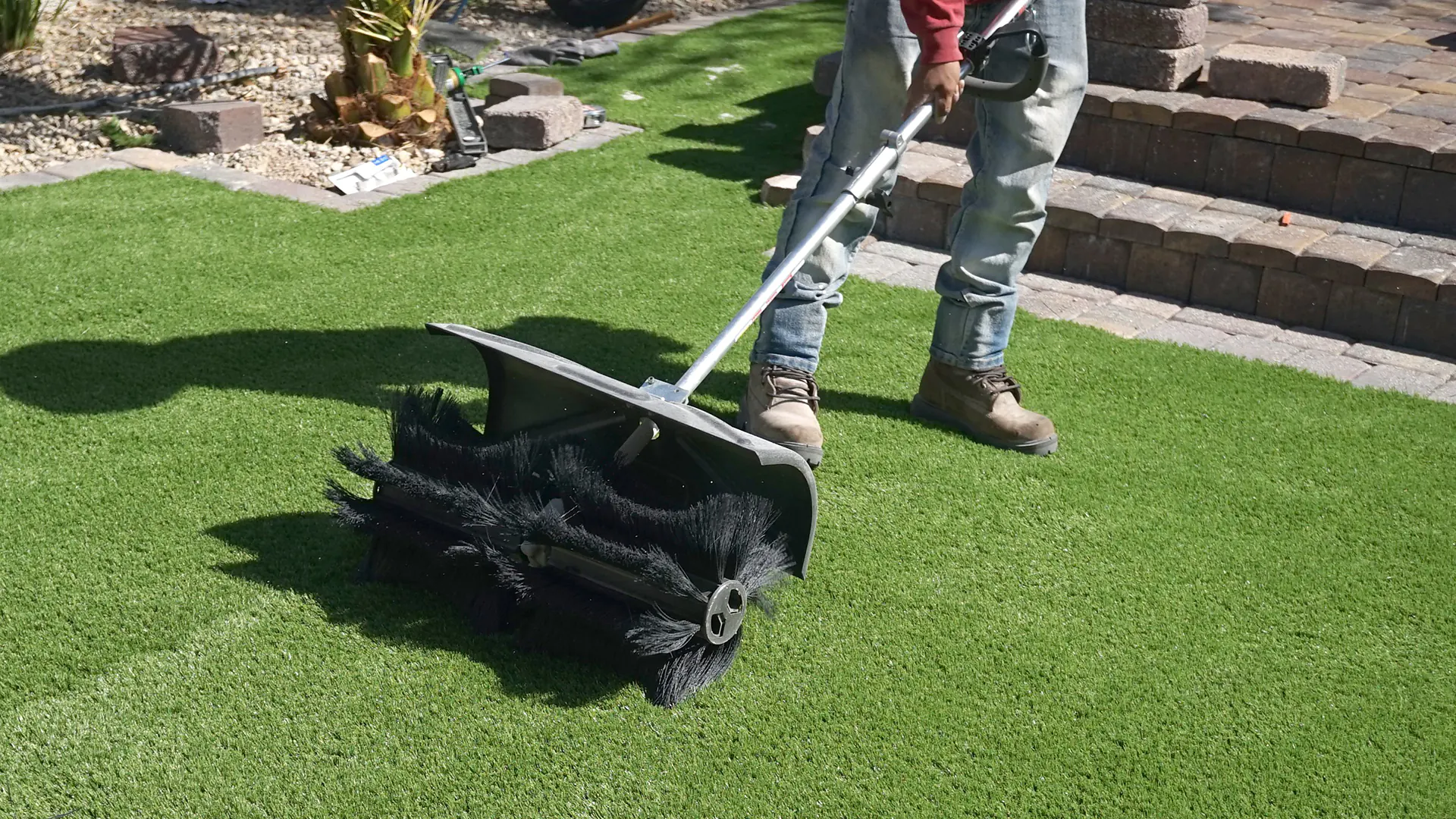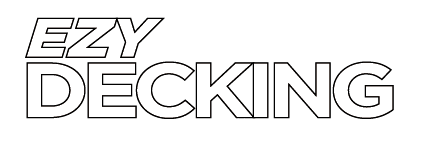
Artificial grass is a practical, low-maintenance option for busy Australian homeowners who want a lush, green property.
Unlike natural grass that demands frequent watering, fertilising, and weed removal, synthetic turf entails less time and effort, resulting in a lush, green, and hassle-free surrounding.
Installing artificial grass means you don’t have to worry about pests, allergens, or long-term maintenance costs.
This practical, sustainable alternative helps enhance your yard’s aesthetics and overall property value for peace of mind and reassurance.
Remember that synthetic grass isn’t perfect and has several downsides, including steep upfront costs, heat retention, and a negative environmental impact.
Although upkeep isn’t as tedious, homeowners must maintain synthetic turf to retain its allure and increase its lifespan.
This blog will explain several steps on how to clean synthetic grass to help Australian homeowners achieve these objectives.
Step 1: Eliminate Debris
The first step in cleaning Sydney artificial grass is eliminating debris. Use a leaf blower or a stiff brush to remove leaves, twigs, branches, and dirt building up on your lawn. We strongly recommend eliminating debris once weekly to prevent decomposition, staining, and damage.
Step 2: Rinse Thoroughly With Water
Next, use a hose or sprinkler to rinse your artificial grass thoroughly. This step eliminates remaining loose dirt and dust on the turf.
Apply a gentle spray setting to retain the infill material and prevent grass fibre damage.
High-traffic yards or gardens prone to pet waste require more frequent rinsing to prevent dirt and odour accumulation.
Step 3: Address Staining
Frequently used or spill-prone synthetic grass can stain over time. To eliminate stains, we recommend mixing mild detergent with warm water.
Lightly scrub the affected area with a soft brush or sponge. Avoid harsh chemicals or bleach, which can harm artificial grass. Rinse the turf thoroughly with water to remove any residue.
Step 4: Prevent Odours
Artificial grass odours are inevitable for pet owners. Consistently addressing this concern will help keep their synthetic turf lush and clean year-round.
Pet owners should eliminate pet waste from their artificial grass and dispose of it immediately. Whether liquid or solid waste, rinse the affected area thoroughly with water and remove residue.
Mix equal parts of water and vinegar or use an odour-eliminating spray on the affected area and let it settle for several minutes. Rinse the spot thoroughly with water again.
Step 5: Brush The Fibres
High foot traffic and large furniture can flatten synthetic grass fibres over time. We urge homeowners to use a stiff brush or an artificial turf rake to brush and rejuvenate the flattened fibres.
Brush against the grains to help the fibres remain upright and reorganise the infill material to smooth out and make the surface consistent.
Step 6: Professional Assistance
Regular cleaning and maintenance will help extend its lifespan, enhance its aesthetic appeal, and improve hygiene and safety.
However, we recommend hiring professional contractors once yearly since they know the best way to clean synthetic grass.
Your service provider can deep clean your artificial grass using eco-friendly supplies and cutting-edge technology to help clean and maintain it properly.
These highly skilled professionals will eliminate stubborn stains, reapply infill material, and thoroughly check your synthetic turf for any damage or anomalies.
Step 7: Shield From UV Rays
Although many manufacturers produce UV-resistant artificial grass, we encourage homeowners to take preventive measures to protect their synthetic turf from excessive sun damage.
Refrain from placing hot objects on the artificial grass because they can melt the fibres.
Consider installing umbrellas, awnings, shade sails, or gazebos to shield your synthetic turf from harmful UV rays, prevent overheating, and ensure a long lifespan.
Step 8: Frequent Checks
Homeowners should inspect their artificial grass regularly to identify possible issues immediately. Thoroughly check for indications of wear and tear, loose seams, damaged fibres, or eroding edges.
Identifying anomalies will help address them before they worsen. For instance, flattened or matted fibres require brushing and new infill.
Conversely, weed growth entails a mild weed killer. If you discover serious issues, don’t hesitate to contact your manufacturer for timely advice.
Step 9: Establish A Pet Waste Routine
Synthetic turf is generally pet-friendly and tolerates pet waste. Nevertheless, we urge pet owners and responsible homeowners to establish a waste management routine to prevent odour accumulation and improve hygiene and safety.
Here are the steps for eliminating pet waste from synthetic turf:
- First, remove pet waste using a pooper scooper, plastic bag, or gloves. For liquid waste, wash the affected spot thoroughly with water.
- Next, spray the affected area with a hose or watering can to remove the remaining residue. Refrain from using high-pressure washers, as they can dislodge the infill.
- Clean and disinfect the spot with a water and vinegar solution or a pet-friendly turf cleaner.
- Apply a pet-safe enzymatic cleaner to eliminate lingering odours.
Step 10: Eliminate Weeds
Nowadays, synthetic turf prevents weed growth. Unfortunately, weeds can seep through drainage holes, edges, and seams, especially during improper installation.
You can pull out the weeds manually or apply an artificial grass weed killer. Be careful when following the latter strategy, as incorrect weed killer use can discolour or harm the turf.
Check your instruction manual for specific weed control instructions.
Step 11: Winter Maintenance
We strongly encourage homeowners to establish a winter synthetic turf maintenance routine to ensure its long lifespan and retain its aesthetic appeal.
Remove fallen leaves or debris that collects on the artificial grass surface that possibly causes damage if left unattended. Wait for muddy or compacted grass to dry before brushing it gently.
Step 12: Occasional Watering
Although Brisbane artificial grass doesn’t require watering for growth, occasional watering (ideally once weekly) can rejuvenate the surface and eliminate dust, debris, pet waste residue, and other contaminants.
This strategy also cools down your synthetic turf during the oppressive Aussie summer months from December to February.
We recommend using a hose or sprinkler system to water your artificial grass. Be mindful of local water restrictions and conserve this resource as much as possible.
Contact Us
Ezy Decking has been the trusted manufacturer of premium artificial grass for numerous customers in major Australian cities, including the Gold Coast, Brisbane, and Sydney.
Contact us to discuss your synthetic turf requirements. We will schedule an on-site inspection and create an upfront, personalised quotation perfect for your needs and budget.





